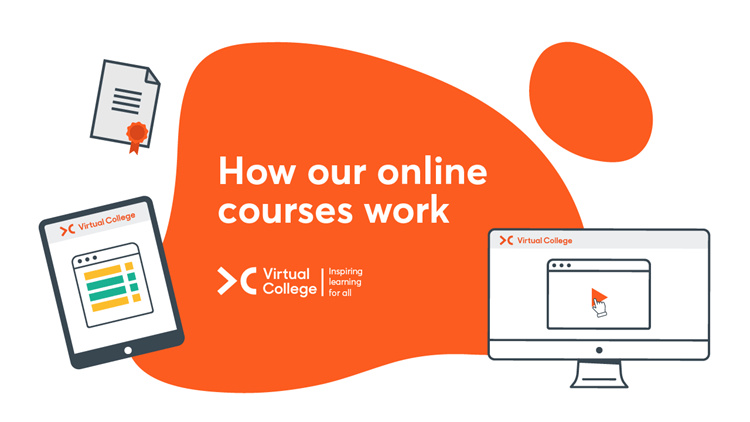Safeguarding Adults Level 3
With this Safeguarding Adults Level 3 training, understand safeguarding in relation to vulnerable adults, learn to identify signs and symptoms of abuse, and what to do to prevent the risk or what to do if you suspect abuse upon a vulnerable adult. Learn about whistleblowing, the importance of multi-agency cooperation and the responsibilities lead workers have within safeguarding situations to keep adults from harm.
Course Overview
Format
- Level 3
- 2-3 Study Hours
- Online Study
- Self-Printed Certificate
Accreditation
- 3 CPD Points
- CPD Certified
Course description
This Level 3 Safeguarding Adults training has been created for those who require knowledge at a practitioner’s level, and has been designed to help increase learners’ confidence when it comes to handling or reporting abuse to the appropriate authorities. It will also help ensure learners are fully versed in the Care Act 2014, and understand what actions should be taken from the current legislation.
We also offer Safeguarding Adults Training at Level 2
Unsure if you require Level 2 or 3 Safeguarding Adults training? Check out our short guide to find the course that best matches your needs and requirements here.
It is a statutory requirement for anyone who works with vulnerable adults to have up-to-date knowledge of safeguarding policies, legislation and guidance. This knowledge will help learners to proactively focus on keeping them safe from harm and maintain the ability to act on any concerns about their safety and welfare.
This course covers the information for Level 3 Safeguarding Adults. It introduces safeguarding as a topic, covering jargon, whistleblowing, multi-agency working and best practice, as well as how to identify the signs and symptoms of abuse, what to do if someone discloses information and what you should do if you suspect a vulnerable adult is being abused.
The content also covers national and local context, as well as focusing on your role and what you can do to recognise and reduce the likelihood of abuse.
As we recognise that roles and responsibilities differ, the information in the course regarding how to deal with abuse is tailored to the needs of a Level 3 learner. We have used immersive real-world scenarios to bring the responsibilities to life, enabling the learners to apply the techniques and learning in their workplace.
What does this Safeguarding Adults Level 3 course cover?
This online safeguarding training course is tailored to the needs of a level 3 learner and aims to inform completers how to ensure the safety of vulnerable adults that they are responsible for by including the latest legislation and guidance.
| Module | What it includes |
| What is Safeguarding? | The course starts with a look at what safeguarding means and how it applies to The Care Act 2014. The first section of the training concludes with an interactive challenge. |
| Categories of Abuse | In this part the training explains the ten types of abuse you should be aware of with detailed explanations and examples of each one. Here the course also looks at the three key aims of safeguarding adults and includes five interactive challenges to improve your understanding of abuse. |
| Emergency and Non-Emergency Situations | When you are responsible for vulnerable adults you may find yourself in an emergency situation. This section explains what you need to do if this happens with different scenarios given as examples. In the second part of this section the course looks at what safeguarding professionals need to do in a non-emergency situation. |
| Gathering Information | This module delves into the importance of gathering information which is accurate and how using different techniques will help you gain the information required. A real-life scenario is also given to help understand how using techniques will help you gather the required information. This part also looks at what you need to do once you have gathered all the information you can and includes three interactive challenges. |
| Adult Safeguarding | This part of the course defines adult safeguarding and how it applies to The Care Act 2014. It also looks at how you need to react to a safeguarding alert and the six steps you need to take, an interactive challenge finishes this section off. |
| Referrals and Allegations | In this part of the training the course explains what happens after the referral of an adult with an animated but detailed video. This part also details what you should do if an allegation is made against a staff member or volunteer with four interactive challenges at the end to help improve your knowledge and understanding. |
| Record Keeping | This module explains the importance of effective and accurate record keeping with another animated yet detailed video. The section concludes with an interactive challenge. |
| Body Maps | Body maps should be included in safeguarding reports to help show the physical marks or injuries. Here the course explains what information needs to be included on a body map. |
| Sharing Safeguarding Information | To help keep a vulnerable adult safe it is sometimes essential to share safeguarding information but this must be in line with legislation such as The Human Rights Act. This section also details which rules must be followed and explains when it is appropriate to share information without consent. It also includes details of where to get advice, the seven golden rules and three interactive challenges. |
| What is Supervision? | This section of the course defines supervision and how it is used in the workplace by providing a real-life scenario and an interactive challenge. |
| The Role of Care Plans and Risk Assessment | Another valuable tool to help prevent abuse and neglect of vulnerable adults is care plans and risk assessments. This part of the course explains what they are and provides an interactive challenge to improve your knowledge. |
| Key Principles | The final part of the course explains the six key principles outlined in The Care Act 2014 which underpin the safeguarding of adults. It also looks at how you can make safeguarding personal, common questions and misconceptions before concluding with three interactive challenges. |
You will learn
- Explain the profound impact some well-known cases of abuse have had on legislation
- Explain the importance of multi-agency cooperation
- Define safeguarding in respect to adults
- Describe what you need to do if a vulnerable adult makes a disclosure or if you suspect abuse
- Explain what whistleblowing is, what it is not, and why it is important
- List the ways you can reduce the risk of abuse
- List the signs and symptoms of the different kinds of abuse
- Outline the responsibilities lead workers in the children’s and young person’s sector have
Who is it for?
Roles including:
- This Level 3 course is suitable for a range of roles working with vulnerable adults, including doctors, nurses, social workers, care workers, police, paramedics and council workers.












/safer-recruitment.jpg?mw=320&hash=A2BB5E144C89C295EC10C63680F69F39C4C3E566)










